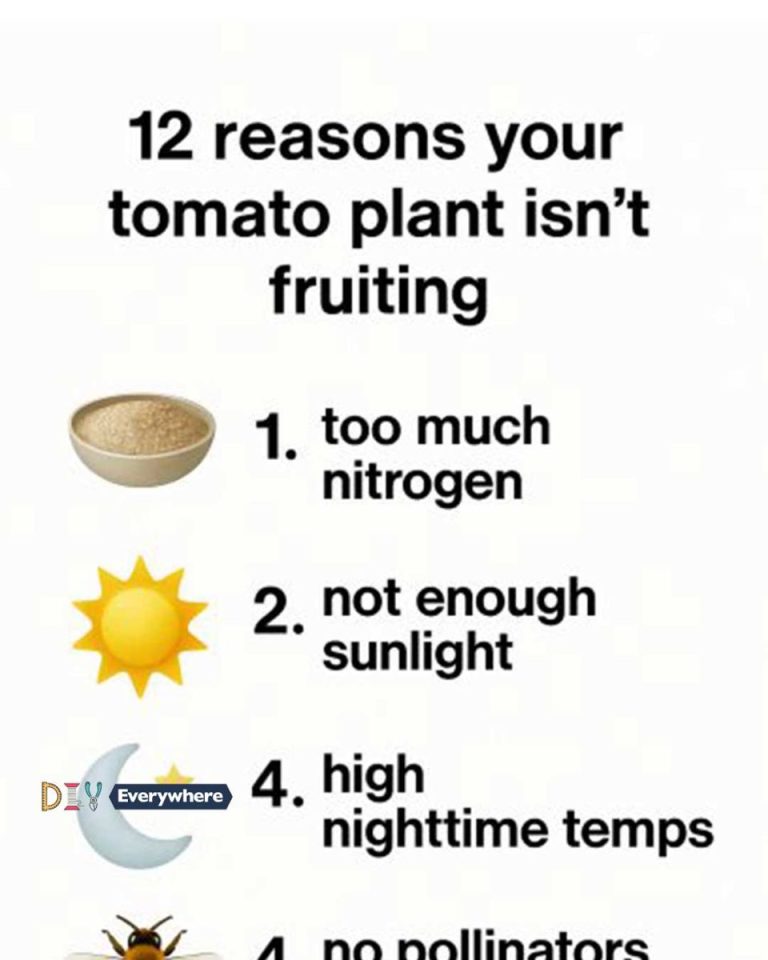12 reasons your tomato plant isn’t fruiting

1. Overabundance of Nitrogen
While nitrogen is essential for plant growth, too much of it can lead to lush foliage at the expense of fruit production. Nitrogen promotes vegetative growth, which is why your tomato plant might look healthy and green but fail to set fruit. To remedy this, use a balanced fertilizer or one with lower nitrogen levels, such as a 5-10-10 (N-P-K) mix. Regularly test your soil's nutrient levels to ensure that nitrogen is not in excess, especially during the fruiting stage.
2. Insufficient Sunlight
Tomato plants require full sun, which means at least 6-8 hours of direct sunlight each day. Without adequate sunlight, photosynthesis is limited, reducing the plant's energy and its ability to produce fruit. Ensure that your tomato plants are not shaded by other plants or structures. If growing indoors or in a shaded garden, consider using supplemental grow lights to provide the necessary light exposure.
3. Excessive Nighttime Temperatures
Tomatoes thrive in warm temperatures, but excessively high nighttime temperatures can impede fruit set. Ideally, nighttime temperatures should range between 55-70°F (13-21°C). When temperatures exceed 70°F (21°C) at night, pollen can become non-viable, preventing successful pollination and fruit formation. Consider using shade cloths or misting systems to cool the microclimate around your tomato plants during hot spells.
4. Lack of Pollinators
Pollinators like bees are crucial for the pollination process in tomatoes, leading to fruit development. If your garden lacks pollinator activity, you might notice fewer fruits. Encourage pollinators by planting a variety of flowers nearby or consider hand-pollinating your plants by gently shaking the plant or using a small brush to transfer pollen between flowers.
5. Inconsistent Watering
Tomato plants require consistent moisture levels to thrive. Inconsistent watering can lead to stress, affecting fruit set. Water your plants deeply and regularly, ensuring the soil remains evenly moist but not waterlogged. Mulching around the base of the plant can help retain soil moisture and reduce evaporation, particularly during hot and dry spells.
6. Poor Soil Quality
The health of your soil directly impacts your plant's ability to fruit. Soil that is too sandy or clay-heavy can lead to poor nutrient uptake and drainage issues. Ensure your soil is rich in organic matter and has good drainage. Consider amending your soil with compost or well-rotted manure to improve its fertility and structure.
7. Improper Pruning Techniques
Pruning helps to focus the plant's energy on fruit production rather than excessive foliage. However, improper pruning can harm the plant or reduce its fruiting capability. Remove suckers that grow in the axils of the plant while leaving enough foliage to protect fruit from sunscald. Avoid excessive pruning, especially during hot weather, to prevent stress on the plant.
8. Pest Infestations
Pests like aphids, whiteflies, and spider mites can damage tomato plants, affecting their ability to produce fruit. Regularly inspect your plants for signs of pest infestations, such as discolored leaves or webbing. Use organic pesticides, insecticidal soap, or introduce beneficial insects like ladybugs to control pest populations and protect your plants.
9. Diseases Affecting Plants
Diseases such as blight, fusarium wilt, and tomato mosaic virus can severely impact a plant's health and fruiting ability. Early detection is crucial; look for wilting, yellowing leaves, or spots on foliage. Implement crop rotation, use disease-resistant varieties, and remove and destroy affected plant material to manage diseases effectively.
10. Wrong Planting Time
Tomatoes are sensitive to temperature fluctuations and should be planted after the last frost date in your area. Planting too early can expose them to cold stress, while planting too late might not allow enough time for fruit to mature. Consult local planting calendars to determine the best planting time for your region.
11. Crowded Growing Conditions
Overcrowding can lead to competition for resources such as light, water, and nutrients, affecting fruit production. Space your tomato plants 18-24 inches apart to ensure adequate airflow and light penetration. Proper spacing also reduces the risk of disease spread among plants.